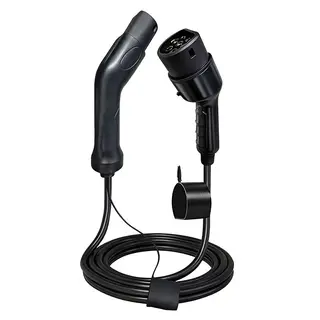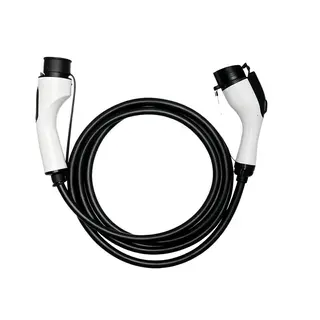With the rapid development of electric vehicles, charging standards have become a key link in the development of the industry. Different countries and regions, based on their own technological foundations and market demands, have formulated diverse charging standards. These standards not only affect the charging efficiency and compatibility of electric vehicles, but also concern user experience and the sustainable development of the industry. This article will delve into the main international electric vehicle charging standards and their characteristics, while analyzing the development history and current application status of domestic charging standards, aiming to provide clear reference for industry practitioners and general consumers.
In the context of the rapid development of electric vehicles, the unification and interoperability of charging standards have become key to the development of the industry. Globally, different international charging standards have emerged, each with unique technical characteristics and application scenarios. Next, let us explore these international charging standards in depth and examine how they promote the development of electric vehicle charging technologies.
CHAdeMO (Charge de Move) is a fast DC charging standard jointly developed by Tokyo Electric Power, Nissan, and other companies in Japan. Its core advantage lies in providing high-power fast charging services for electric vehicles, meeting users' demand for rapid energy replenishment. Under the CHAdeMO standard, fast DC charging is achieved between the charging station and the electric vehicle through a special plug and connector, with charging power reaching 62.5 kW, and some new models even supporting higher power.
This standard has gained a certain degree of recognition and application globally, especially in Japan and some European and American countries. However, due to its relatively complex interface design and compatibility issues with other standards, its wider adoption is limited. Nevertheless, the CHAdeMO Association continues to actively promote the upgrade and promotion of this standard. For example, the CHAdeMO 2.0 specification increases charging power to 400 kW and collaborates with China to develop ultra-fast connectors, aiming to secure a position in future market competition.
CCS (Combined Charging System) is an integrated charging system that cleverly combines Europe's Mennekes AC charging standard with the American SAE J1772 DC charging standard. This design allows the CCS charging interface to be compatible with AC charging while supporting DC charging, meeting diverse charging needs in different regions and for different vehicle models.
The CCS standard uses the same plug as the Mennekes Type 2 AC plug, with two additional DC electrodes added below, enabling seamless switching between AC and DC charging. Its AC charging maximum power can reach 22 kW, while DC charging power can reach 350 kW or even higher, giving CCS a broad application prospect in European and American markets. Many internationally renowned automakers, such as BMW, Volkswagen, and Ford, support the CCS standard and apply it widely in their models, promoting its adoption in Europe and the U.S.
The GB/T standard is China's national standard in the field of electric vehicle charging, formulated by the Standardization Administration of China (SAC). This standard covers all aspects of EV charging, including technical requirements for AC and DC charging, interface specifications, and the installation and use of charging facilities, providing solid technical support for the rapid development of China's EV sector.
Since its release, the GB/T standard has been widely applied in China and has become the main standard for EV charging. Its AC charging interface uses a three-phase four-wire system, with a voltage of 380V and a maximum current of 32A; the DC charging interface supports higher voltage and current, with maximum charging power reaching 120 kW. With continuous technological advancement, the GB/T standard is also being continuously updated and improved to meet the fast-developing needs of the electric vehicle industry.
IEC (International Electrotechnical Commission) is an international standardization organization responsible for formulating international standards across various electrical, electronic, and related technology fields. In the field of EV charging, IEC also plays an important role, participating in the formulation of charging interface standards, the most representative being the IEC 61851 series.
The IEC 61851 series specifies AC and DC charging interface requirements, providing unified specifications for the design and manufacturing of global EV charging interfaces. This series covers multiple charging modes and connection methods, applicable to different types of electric vehicles and charging equipment. For example, IEC 61851-1 specifies general requirements for charging systems, IEC 61851-23 specifies requirements for DC charging facilities, and IEC 61851-24 specifies communication protocol requirements between electric vehicles and charging facilities. The formulation of these standards has promoted the international standardization and interoperability of EV charging technology, laying the foundation for the integrated development of the global EV market.
Tesla, as a globally recognized electric vehicle manufacturer, has launched its proprietary fast DC charging standard—the Tesla Supercharger standard. This standard is specifically designed for Tesla electric vehicles, aiming to provide convenient and efficient long-distance travel charging services for Tesla owners.
Tesla Supercharger stations are deployed across major cities and highways worldwide, forming a large exclusive charging network. They offer high charging power, with some stations reaching 250 kW or more, allowing Tesla vehicles to recharge quickly. However, because this standard is Tesla's proprietary technology, electric vehicles from other brands cannot directly use Tesla Supercharger stations, which limits its universality to some extent. Nonetheless, the successful operation of the Tesla Supercharger network provides strong support for long-distance travel in EVs and offers valuable experience for other companies.
ISO (International Organization for Standardization) is also actively involved in the development of EV charging standards. By formulating a series of standards, ISO promotes international standardization and interoperability of charging technology, fostering the healthy development of the global EV industry.
Among them, ISO 15118 is an important standard in EV charging, covering communication protocols between electric vehicles and charging facilities. This standard specifies the data transmission format, communication process, and security requirements between EVs and charging facilities, improving vehicle intelligence and network connectivity. Through ISO 15118, electric vehicles of different brands and models can achieve seamless communication and compatibility with various charging facilities, providing a more convenient charging experience for users.
Globally, there are significant differences in EV charging interface standards across regions, mainly reflected in AC slow charging and DC fast charging. The following is a detailed analysis of charging interface types in different regions:
North America's charging standards mainly apply to the U.S. and Canada. AC charging has a maximum voltage of 240V AC and maximum current of 80A AC; DC charging has a maximum voltage of 1000V DC and maximum current of 400A DC. This voltage and current design meets most EV charging needs while ensuring efficiency and safety.
In North America, AC charging usually uses the SAE J1772 standard interface, while DC charging mainly uses the CCS standard interface. SAE J1772 is a universal AC charging interface, widely used in North American EVs and charging facilities. The CCS standard interface dominates the DC charging field, integrating AC and DC charging functions for greater convenience.
Europe's voltage range is similar to China's, but its charging interface standards have unique features. AC charging has a maximum voltage of 480V AC and maximum current of 63A; DC charging has a maximum voltage of 1000V DC and maximum current of 200A DC. Higher voltage and current allow European charging facilities to provide faster charging, meeting users' demand for efficiency.
Europe primarily uses the CCS2 standard interface, an upgraded version of CCS1 with better compatibility and performance. CCS2 supports both AC and DC charging, accommodating different EV types and charging facilities. Additionally, Type 2 AC connectors are widely used in Europe, providing good compatibility and interchangeability for various EV brands and models.
Japan's charging standards are relatively unique. AC charging uses the U.S. J1772 standard, while DC charging uses CHAdeMO. This combination allows Japanese charging facilities to meet both AC and DC charging needs, providing diverse charging options.
CHAdeMO is Japan's representative DC charging standard, developed jointly by five Japanese automakers, and aims to promote global adoption. Although it is not widely adopted worldwide, it still has high usage in Japan and some European and American countries. CHAdeMO supports a maximum charging power of 62.5 kW and maximum current of 125A. The revised CHAdeMO 2.0 specification increases charging power to 400 kW, strongly supporting rapid EV charging.
In terms of charging interface standards, China's GB/T standard uses a unique design, differing somewhat from other major international standards. GB/T sockets use female pins, while vehicle plugs use male pins, improving interface reliability and safety. However, like AC interfaces, GB/T plug tolerances still have issues, with overheating at high current leading to shorter connector life. China is continuously improving interface design to enhance performance and reliability.
In addition, China is actively promoting internationalization of charging interface standards, strengthening alignment and mutual recognition with international standards. Through cooperation with international standard organizations and other countries, China aims to play a greater role in global EV charging standard development and promote international industry growth.
DC charging communication protocols are a key part of EV charging technology, directly affecting charging efficiency and safety. Major international DC communication standards include IEC 61851-24 and ISO 15118 series. IEC 61851-24 specifies the digital communication format and timing requirements between EVs and DC charging stations, while ISO 15118 covers basic requirements for EV-grid communication, interface networks, application protocols, and conformance testing.
China has also established corresponding standards for DC communication, namely GB/T 27930-2015. This standard defines the CAN-based communication physical layer, data link layer, and application layer between non-onboard EV chargers and battery management systems. Implementation of this standard has effectively regulated and ensured DC charging in Chinese EVs, improving stability and reliability.
In summary, with the rapid development of the EV market, charging standards play a crucial role in ensuring charging efficiency, compatibility, and user experience. Globally, countries and regions have formulated diverse standards according to their own needs, such as Japan's CHAdeMO, Europe and the American CCS, China's GB/T, and standards promoted by Tesla, ISO, and IEC. These standards each have their characteristics and complement one another. In the future, with technological advancement and strengthened international cooperation, charging standards are expected to further move toward unification and interoperability, providing more solid support for EV adoption, long-distance travel convenience, and sustainable industry development.



